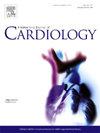Different association of HDL-C, apoA-I, and HDL-C/apoA-I with multiple outcomes in HFrEF patients
IF 3.2
2区 医学
Q2 CARDIAC & CARDIOVASCULAR SYSTEMS
引用次数: 0
Abstract
Background
High-density lipoprotein-cholesterol (HDL-C) has been considered a cardioprotective factor for several decades. However, its association with outcomes in patients with heart failure with reduced ejection fraction (HFrEF) remains controversial. We aimed to investigate the association of HDL-C, apolipoprotein A-I (apoA-I), and the HDL-C/apoA-I ratio with multiple outcomes of HFrEF patients and establish prognostic models using machine learning methods.
Methods and results
This was a retrospective, single-center study. The associations between lipid levels and multiple outcomes were examined using logistic regression analysis. Prognostic models for multiple outcomes were further established using four machine learning methods. A total of 352 HFrEF patients were visited successfully. In the multivariable-adjusted logistic regression analysis, HDL-C did not show a significant association with any of the studied outcomes; apoA-I was marginally unassociated with all-cause rehospitalization (adjusted odds ratio [aOR] = 0.62, p = 0.063) but was significantly negatively associated with all-cause death (aOR = 0.53, p = 0.038), rehospitalization for cardiovascular or cerebrovascular disease (aOR = 0.43, p < 0.001), and rehospitalization for heart failure (aOR = 0.55, p = 0.024); apoA-I was also significantly positively associated with left ventricular ejection fraction (LVEF) improvement (aOR = 2.00, p = 0.039). Although several p-values were not statistically significant, both the first and third HDL-C/apoA-I groups showed an increased incidence rate for all adverse outcomes compared with the middle group and a decreased incidence rate for LVEF improvement. In the machine learning analysis, the support vector machine and extreme gradient boosting models demonstrated better predictive performance. For each outcome prognosis, apoA-I and logarithmic N-terminal pro-B-type natriuretic peptide were automatically selected.
Conclusion
Among HFrEF patients, apoA-I may be a better marker for predicting outcomes than HDL-C. Both low and high levels of HDL-C/apoA-I may indicate a poor prognosis of HFrEF patients.

HDLC、apoA-I和HDL-C/apoA-I与HFrEF患者多种结局的不同关联
背景:高密度脂蛋白-胆固醇(HDLC)几十年来一直被认为是一种心脏保护因子。然而,其与心力衰竭伴射血分数降低(HFrEF)患者预后的关系仍存在争议。我们旨在研究HDLC、载脂蛋白A-I (apoA-I)和HDL-C/apoA-I比值与HFrEF患者多种预后的关系,并使用机器学习方法建立预后模型。方法和结果:这是一项回顾性、单中心研究。脂质水平与多种结果之间的关系采用logistic回归分析进行检验。使用四种机器学习方法进一步建立了多种结果的预测模型。共成功访问了352例HFrEF患者。在多变量调整logistic回归分析中,HDL-C与任何研究结果均无显著相关性;apoA-I略与全因再入院治疗无关(调整优势比(aOR) = 0.62,p = 0.063),但与全因死亡显著负相关(aOR = 0.53,p = 0.038),再进医院心血管或脑血管疾病(aOR = 0.43,p 结论:HFrEF患者,apoA-I可能是一个更好的预测结果比为标志。低水平和高水平的HDL-C/ apoa - 1可能表明HFrEF患者预后不良。
本文章由计算机程序翻译,如有差异,请以英文原文为准。
求助全文
约1分钟内获得全文
求助全文
来源期刊

International journal of cardiology
医学-心血管系统
CiteScore
6.80
自引率
5.70%
发文量
758
审稿时长
44 days
期刊介绍:
The International Journal of Cardiology is devoted to cardiology in the broadest sense. Both basic research and clinical papers can be submitted. The journal serves the interest of both practicing clinicians and researchers.
In addition to original papers, we are launching a range of new manuscript types, including Consensus and Position Papers, Systematic Reviews, Meta-analyses, and Short communications. Case reports are no longer acceptable. Controversial techniques, issues on health policy and social medicine are discussed and serve as useful tools for encouraging debate.
 求助内容:
求助内容: 应助结果提醒方式:
应助结果提醒方式:


